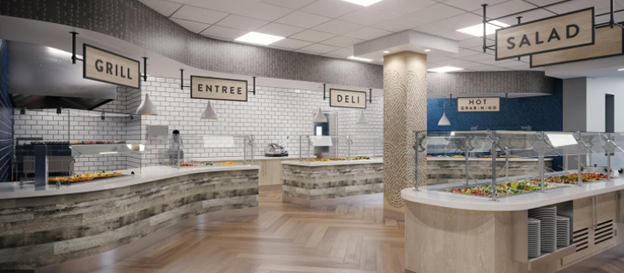Years ago, JGL’s social media channels hosted a “FAQ Tuesday”. In recent months, we have had a few requests to bring it back. Instead, we are replicating our top eight FAQ’s for on-site dining here.
- Q. We have an office population of 900 people. Should we expect to pay a management fee?
As a rule of thumb, most on-site dining operations are unable to break even with a population of less than 1,200. - Q. We do not want to be on a management fee or cost-plus model because our vendor has no incentive to manage costs. What can we do?
Key performance indicators and strong contract language can go a long way towards “sharing the risk.” Maintaining the account should be considered the incentive for the food service management company. - Q. Our contract requires the vendor to pass along all discounts. This means we are getting purchasing rebates, right?
Not necessarily. Product rebates should be called out as such in the contract and visible and credited on the operating statement. - Q. We are interested in featuring locally sourced product. What can we anticipate from our vendor?
Virtually all food service management companies can implement some level of local purchasing. It is important to define “local” – how many miles and how far down the chain does sourcing go? It is equally important to report on local purchases and tell the story to customers. - Q. What is a good participation rate?
It varies by region, type of facility, satisfaction, pricing and a host of other factors. Lunch participation can be quite high (50% plus) in a remote location with few competitive outlets while it might average much lower (30%) in a major metropolitan area with many competitive options. - Q. How can we increase participation rates?
On-site cafés are increasingly competing with the street. Variety, quality, merchandising, pricing, and wait times are all important to your employees. Do a survey of your employees to gauge satisfaction levels. If convenience is the on-site café’s only strength, that indicates the need for a revamp. - Q. Our vendor wants to implement a mobile solution to facilitate orders. Should we invest in this?
Before the pandemic, many food service management companies were experimenting with mobile apps and finding limited adoption rates. Post pandemic, consumers are accustomed to mobile ordering and see it as a convenience. We believe mobile ordering is here to stay and should be part of your re-opening plans. - Q. Do we need to devote so much real estate to an on-site kitchen? Can we have good food service without a kitchen?
Many corporate clients are asking that question right now as they look at diminished space needs in the face of shifting work-from-home policies. The good news is there are a plethora of options (ghost kitchens and commissaries), equipment (ventless solutions) and services (delivery and app based) that allow you to feed your employees without the investment in a large footprint.

